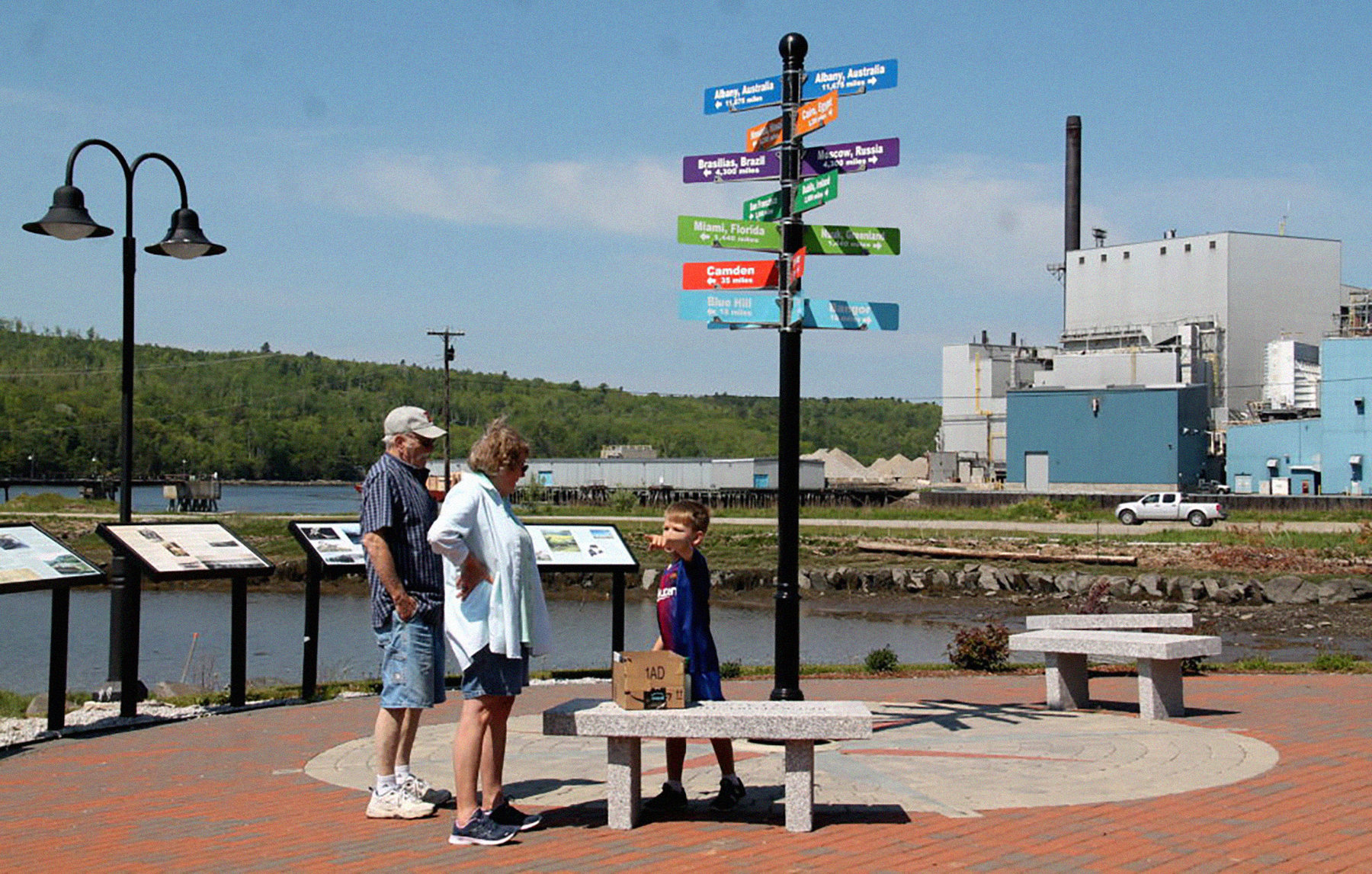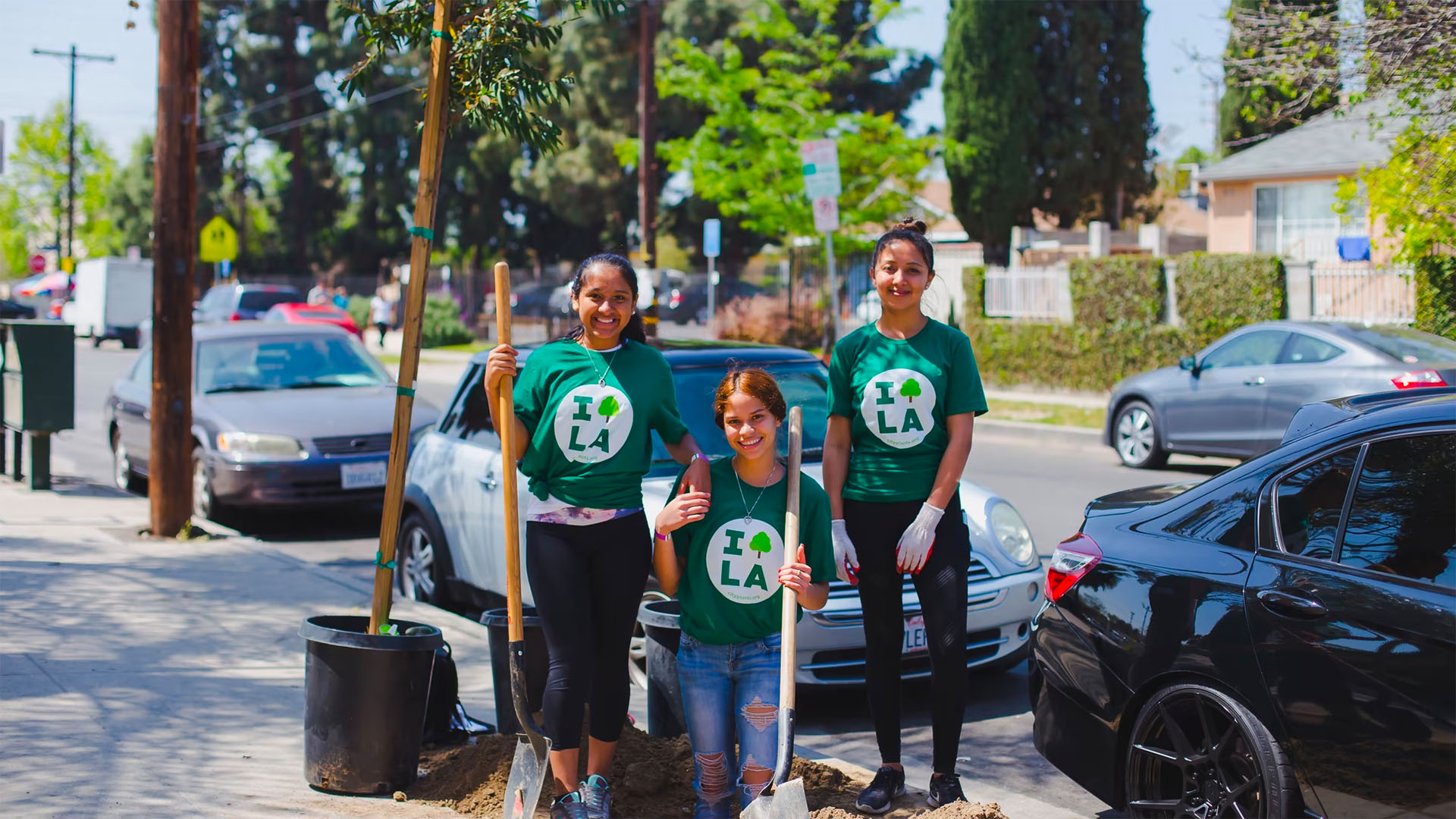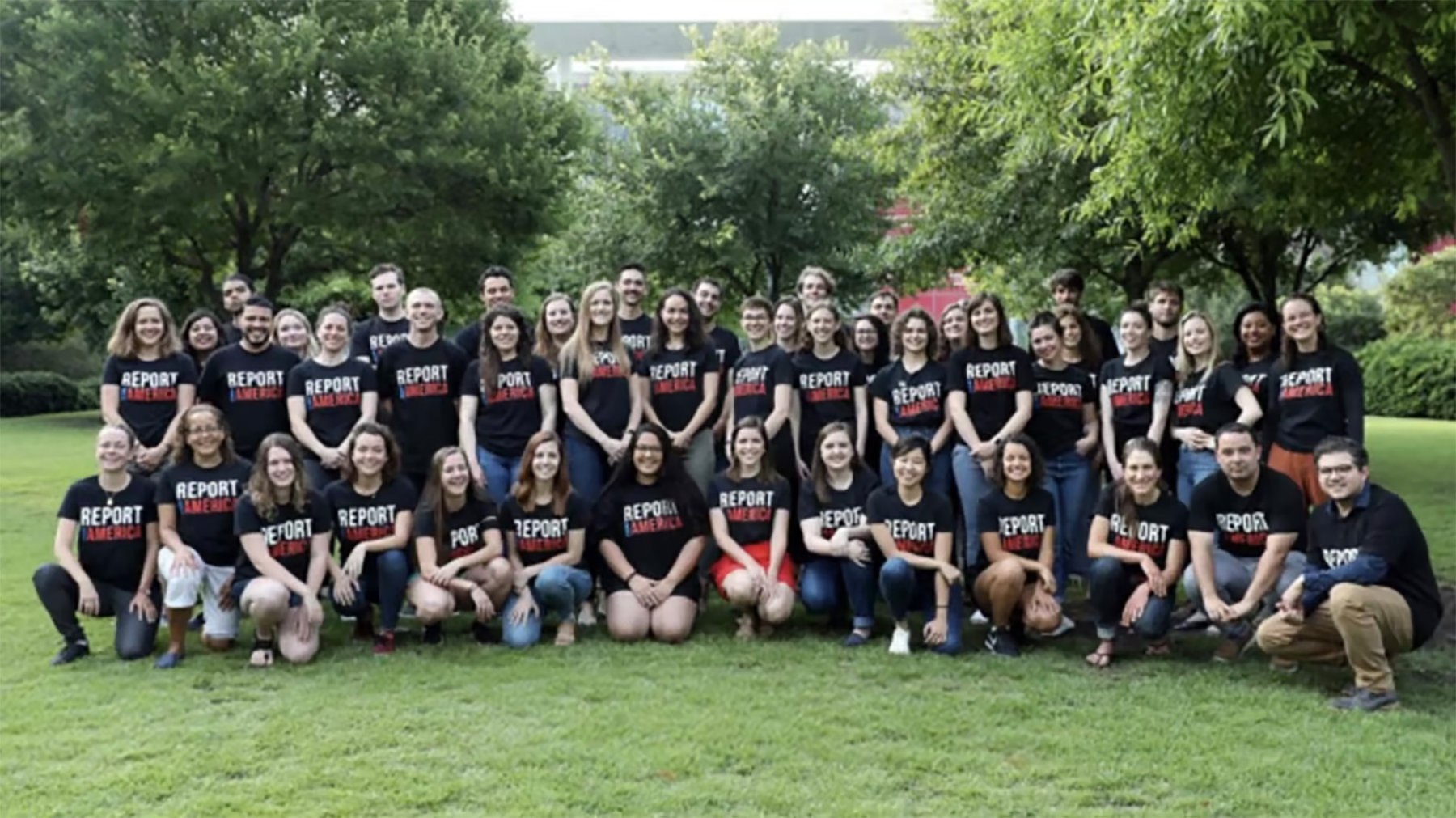Around the time Our Towns was published six years ago, in 2018, people would occasionally ask Jim and me whether we had found projects about the environment and climate change in the communities we visited. I remember thinking to myself, “a few, but actually not that much,” as we scrambled to come up with examples. For instance:

- In 2016 we saw wind turbines installed on farmland in Spearville, Kansas, east of Dodge City, which generated energy and brought a windfall to local farmers and to the town. Spearville could suddenly afford to upgrade schools and playgrounds. When some people complained about the whirring noise of the turbines, others said, “That’s the sound of money.”
- Since its founding, Redlands, California has been progressive about trees. The first orange groves were planted in 1882, and became a big part of the regional economy. The City Council established a Street Tree Committee in 1998 for the planting and care of the city’s street trees. There’s now an annual tree giveaway, and expanded programs for education and incentives to replace grass yards with native plants.
- The A.J. Whittenberg Elementary School of Engineering in Greenville, South Carolina constructed a greenhouse from recycled gallon-size plastic bottles and waged a campaign to stop vehicles from idling outside the school entrances.
That was about it. Maybe we hadn’t looked hard enough, we thought. Or maybe there wasn’t yet enough to see.
Emerging sustainability stories from communities everywhere.
The ramp-up over the last several years of reporting on small-scale local environmental activity astonishes us. Today and every day, my inbox floods with stories about climate, environmental, and sustainability projects. Here’s a sampling from a typical day:
- A story from Cleveland’s online non-profit news organization The Land, by a citizen journalist who was trained through the community journalism program, about high schoolers who created a climate summit to educate and problem solve about local issues in their neighborhoods, from environmental justice to advocacy training
- A story about a lending library of tools in Buffalo, which grew into a so-called repair café (part of a global movement now numbering more than 2500) in the basement of the public library, manned by local volunteers with their tools and fix-it skills. They repair small appliances and electronics, mend torn clothing, and more, bestowing these things a second life, and keeping them out of landfills, at least for a while.
- A regular newsletter from KneeDeep Times in the Bay Area of northern California, highlighting a podcast by a local elementary school teacher and how she integrates “nature based learning” into her classroom lessons.
- Another newsletter about the impacts of noise on health and the ecosphere, and how communities can take on the work of protecting themselves.
- And another newsletter that includes stories about environmental issues of all sorts in rural communities in America.
All these stories are from just a single day.
Regularly now I read about citizen scientists who are restoring butterfly habitats, or protecting nesting sea turtles, or charting migratory bird patterns. Or about other communities that are transforming old railbeds into walking and biking paths. Or local governments that are imposing bans on plastic bags or gas-powered leaf blowers; piloting compost collection programs; scheduling electronics-recycling days; subsidizing rain water collection systems and solar installations.

A new generation of ‘Sustainability Natives’
Many of the new projects deliberately make room for young people, at their schools or clubs. This is no small thing; it leads to nurturing kids like the activist high-schoolers in Cleveland, who are now growing up as sustainability-natives, comparable to the digital-natives of the preceding generation.
Here’s one example of how a commitment to sustainability takes hold:
I recently returned from a visit to the farm in Redlands CA, called SURF (The Sustainable University of Redlands Farm), which is a collaborative between the University of Redlands and California’s Climate Action Corps, (CCAC) part of the state’s ambitious Cal Volunteers program, in partnership with the national Americorps. This year, I met with two first-year members of the CCAC. While some of the earlier fellows I had met in the movement seemed to land on the program as an interim gig between college and the rest of their lives, the two students I met on this visit were drawn to the program explicitly because of their exposure to environmental and climate-related issues earlier in their young lives.
One young woman had become interested through a high school club where she learned about recycling and climate change, an experience that she said had sorted her into the climate action direction. The other became the president of the environmental action club in college. What really hit home for her, she recounted, was when the El Dorado fire burned 23,000 acres in nearby mountains of Southern California in the fall of 2020. The lesson here? The kids are paying attention, and they are growing up absorbing the facts of sustainability, climate change, and the environment as part of their personal development. And this can lead to taking action.

Where to find the stories.
The numbers of outlets and organizations reporting about a range of local-renewal projects, including sustainability efforts like these, are also growing. Some are seriously funded by big philanthropy, and others are very modestly funded locally.
- There are organizations that collaborate and share, like Climate Central, founded in 2008, which is a resource for science, data, and technology, to help journalists and media reporters and other communicators tell rich stories about the environment that they could never develop alone.
- There are digital magazines like KneeDeep Times, started in 2021, which reports stories on local climate adaptation efforts from communities in the San Francisco Bay Area.
- Other online publications have dedicated sections for coverage of sustainability issues. One is the online magazine, Reasons to be Cheerful, founded in 2018 by the musician and artist David Byrne.
- Other groups train or encourage or sponsor journalists to report about the environment. Report for America, (RFA) founded in 2017, places mid-level journalists with skills from multimedia to photography to data analysis and more into local media outlets around the country. Of their current 600 fellows, 40 of the 2023 members are on some kind of environmental beat.
RFA, in collaboration with the Missouri School of Journalism, launched the Mississippi River Basin Ag and Water Desk in 2021, reporting on environmental stories up and down the Mississippi River watershed. Since their founding, they have produced more than 1,000 stories, appearing in outlets from rural newspapers and radio to national media.
- Covering Climate Now, founded in 2019, is a network of more than 500 media partners worldwide to improve climate reporting. They also sponsor practical webinars for journalists, including one this month aimed at helping journalists engage local readers in local climate stories.
- In New Jersey, the nonprofit news site Civic Story focuses on climate, civic engagement, and change. They launched a project called the New Jersey Sustainability Reporting Hub, and announced the 6th class of university student reporters as members of the Ecology-Justice Student Reporting Fellowship. Civic Story says, “..these passionate young people are committed to amplifying civic actions taken to restore healthy ecosystems and a thriving, inclusive democracy.”
New ways to tell sustainability stories:
Stories reach us through traditional print and digitally, through videos, podcasts and radio programs, conferences, and summits. An online format developed by Esri, the global mapping company (Esri is a founding sponsor of Our Towns Foundation) developed a storytelling platform, called StoryMap, that offers a menu of options to present different pieces of a story in different ways — whether by words, maps, photos and videos, audios clips, charts and graphs, and timelines. The creator of a StoryMap can be at once a writer, illustrator, geographer, data analyst, videographer, and sound reporter. The result is an entirely interactive product manipulated by the StoryMap consumer, who becomes at once a reader, viewer and listener. You can think of StoryMaps as a grown-ups’ version of the “Choose Your Own Adventure ” paperback series for kids, popular a generation ago.
Last year, Esri sponsored a storytelling contest about environmental topics, built using the StoryMaps platform. Our Towns decided to award our own prize, for a community-based StoryMap.
Our winners, Ella Ashford and Riley Forth, are students at Willamette University, studying environmental science and archeology . Their story documents the tale of locating and salvaging derelict crab pots that have sunk to the floor of the Salish Sea near the Olympic Peninsula of Washington state.

We found the StoryMap proved an excellent way of making a complex science story simple and compelling. They covered the elaborate technology and trials and errors of the underwater robots used find and salvage the crab pots, the processing the massive data collection, the documenting of crabs (living and dead) they found, and the surprises of sea life and marine debris in the water. The StoryMap brought an elaborate science story to life as an adventure story, with video, audio, photography, maps, and lots of human interest.
The students told Esri in an interview: “Between collecting side-scan sonar data, GPS coordinates, and information about the species within the derelict crab pots, it felt like we were drowning in data! The major challenge became how to display it in a fun and interactive way that could engage the communities that we had been working within.”
This StoryMap also appealed to Our Towns because the authors had room to take their findings to a higher level, writing it as a collaborative, community story. Again, in their own words, the students said, “It is about how students, community members, and county governments can come together to tackle pressing environmental challenges on a local scale. We like to think that our story demonstrates how one small idea can spur community action to work towards a more sustainable future.”
Our Towns is heartened by the progress over the last decade: citizen engagement, particularly by young people, with local environmental initiatives; journalism’s commitment to tell the stories; dedication from many funding levels to support the work, the reporting, and the publication of the stories.




